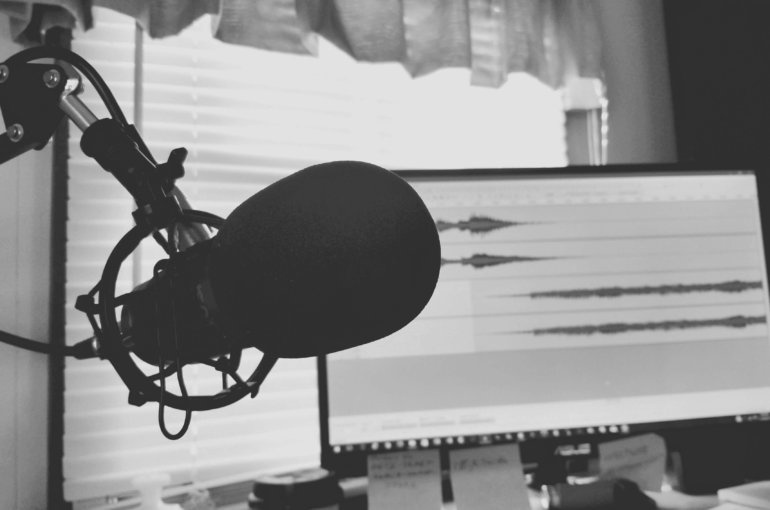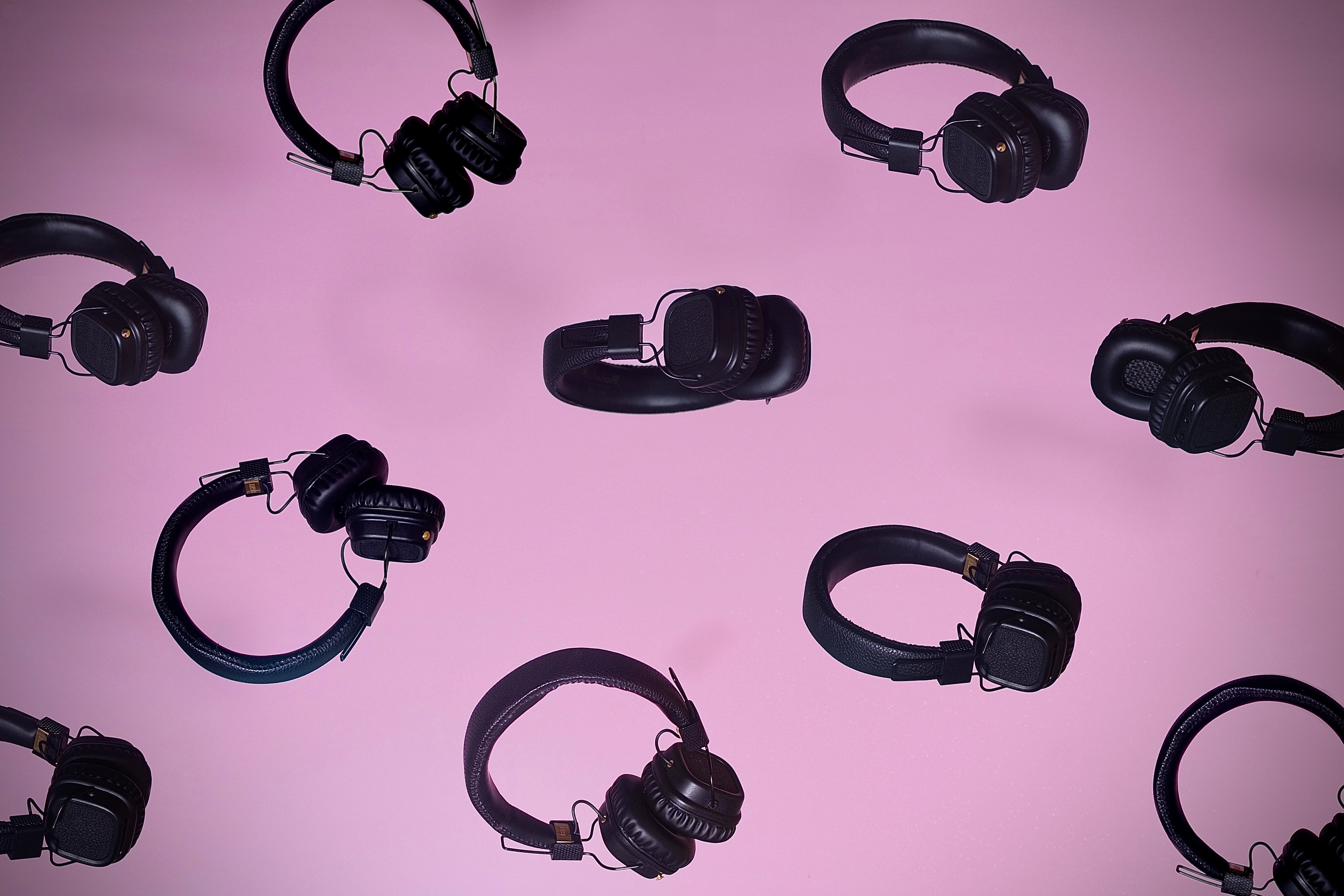Podcast Launch Master Checklist

PLANNING
Before you get started on your podcast, you need to follow standard marketing planning procedures: define your objectives, target audience, strategy and tactics.

Define your objectives
Why do you want to launch your podcast? Be clear about your objectives:
- Lead generation/brand awareness/just for fun/something else?
- Integrate your podcast activities within the wider marketing plan.
- Define a budget.
- Put processes in place to measure your podcast’s performance against these objectives.
Define your audience
Before you start developing your podcast, you need to have a clear idea of who you want to reach:
- Review the objectives of your podcast project against your marketing personas.
- Your stated objectives will help to define your target audience.
- Develop personas for your target listener so everyone involved in the project is clear about who your target audience is.
- Consider also how and when your audience will listen to your podcast. Which podcast directories do they use?
Identify your competitors
Who else is producing podcasts that target your intended audience? It’s helpful to understand what/who else is competing for your audience’s finite listening time:
- Search podcast directories to discover what shows already exist in your niche.
- Review the posts of your followers to see whether they regularly post about podcasts.
- Speak with your influencers to understand what podcasts they listen to.
- Listen to relevant podcast content to understand the style and content strategies they deploy. What do you like/dislike? What could you do better?
Develop a content strategy
What does your target audience want to listen to? What do they want to know about? Where can you add value?
- Use your competitor research to guide you in terms of content areas.
- Mind map with your team to identify new potential topics of interest.
- Decide which format will best suit your chosen topics and target audiences.
- Schedule a plan for recording, editing and publishing your different episodes. (Remember to allow time for the editing process as this can be lengthy.)
- Develop a tactical marketing plan for each episode at the same time, so you have a rough idea of the groups and influencers you want to use to promote it.
Plan your episodes
Each episode needs its own tactical plan:
- Identify guests and subject matter experts (both inside and outside your company) with whom you can collaborate on your chosen topics.
- Reach out to guests to schedule invitations and interviews.
- Develop a rough script for each episode and each guest slot. This will help to ensure you stick to the main topic areas and points you have identified and help to prevent you and your guests disappearing down any conversational rabbit holes.
CREATION
You’ll need to produce three or four episodes of your podcast before launch to ensure a smooth publishing schedule.

Name your podcast
The name of your podcast has to attract and excite potential listeners – choose something that will stand out in a directory list:
- Make the name of your podcast memorable and meaningful.
- Ensure that the social media handles exist for your podcast name; this way, you can create separate social media accounts for promoting your podcast episodes.
- If you have got a particular USP – whether that’s a strong brand name, a particularly hot topic area or a well-known presenter – consider whether this should be included as part of the podcast name.
Find your host
It may not always be possible to recruit a presenter internally, but it will save you money if you can:
- A natural presenter, perhaps a member of your sales team.
- Someone with a clear speaking voice.
- Someone who can build rapport with your podcast guests and interviewees.
- Someone who is willing and motivated to help with promotion.
Equipment check
The main decision you have over equipment is whether to go DIY on your recording or book professional studio time:
- Opting for time in a professional recording studio will help to ensure you achieve a clear recording and good quality sound, but it can be expensive and might not be as convenient.
- These days, investing in a good quality microphone doesn’t have to cost a lot. Provided you have a quiet room in which to record, this is really all you need:
- The Blue Yeti Pro claims to be the world’s most versatile ultra-high-resolution USB and XLR microphone. It features a 24-bit/192kHz audio resolution for superior recording quality, analogue XLR connection for use with pro-studio gear, a unique three-condenser-capsule array with cardioid, bidirectional, omni and stereo pattern settings, zero-latency headphone monitoring, XLR breakout cable and USB cable, Mac and PC drivers for use with favourite software, plus gain control, a mute button and other handy features for a hassle-free workflow.
- The Shure MV88+ Video Kit provides the essential gear for capturing professional-quality audio: a Shure MV88+ microphone, Manfrotto PIXI Tripod, phone clamp and shoe‐mount mic clip, and USB‐C and lightning cables. Plus, free ShurePlus MOTIV audio and video apps on your iPhone or iPad give you recording control, as well as the ability to save and share your content in multiple formats.
- The RODE NT-USB versatile Studio-Quality USB Microphone is a high-quality studio microphone with USB connectivity. It includes pop shield, tripod desk stand, ring mount, storage pouch and 6m (20’) USB cable, 3.5mm stereo headphone jack for zero-latency monitoring and direct mix control between mic input and source output.
- It’s even cheaper to get started if you hire your equipment. Until you get your podcast off the ground and decide whether it is going to be part of your long-term marketing strategy, this might be a lower-risk option.
Tips for recording
Cleanly recorded audio will ensure a professional result and reduce the time you spend on the editing process. So, test, test and test again before you begin:
- It is a good idea to test your microphone extensively before you begin recording for real. Do this well in advance – don’t leave this to the last minute, in case you need to invest in any additional equipment or move rooms.
- A large, quiet room is the best location for recording.
- If you only have limited space available, try to find a small, quiet room that has lots of material to absorb sound; even carpeting can help.
- If you are hearing sound distortions (such as plosives or sibilance), you might be too close to the microphone. Sitting at an angle can also help. The optimal distance and position can often depend on the microphone you are using, so try a few different approaches to see which gives the cleanest result.
- Keep a glass of water on hand for each of your presenters – you don’t want their voice to crack because their mouth is dry.
- If you make a mistake, keep going. You can always tweak your performance during editing.
Select an editing tool for post-production
To achieve a professional sound for your podcast, you’ll need to use an editing software – but this doesn’t have to be expensive:
- If you’re an Apple person, then you need look no further than Garage Band. It is an easy-to-use tool that comes free with most Apple computers.
- Audacity is a free (open source) audio editing tool that has versions for Mac, Windows and Linux. It isn’t as intuitive as Garage Band, but there are videos and online tutorials that can help you climb that learning curve.
- If you want to record podcast interviews with a remote contributor over the Internet, SquadCast could be a good investment. It records separate tracks for each speaker and loss-less audio, so you get a high-quality result that is easy to edit.
- If you already have a subscription to Adobe Creative Cloud, you could use Adobe Audition CC. This is an advanced solution with high-quality EQ and noise-reduction tools, making your Adobe CC licence even better value for money.
- descript.com is an interesting tool for recording, mixing, transcribing and editing your audio. You can even use it to edit video.
Edit your recording and produce your podcast
We often don’t realise how many fillers we use in our natural conversation until we listen to ourselves back – this is where editing pays dividends:
- The editing process is an opportunity to remove any mistakes, stammers and extended periods of silence.
- If you are working with two or more audio tracks, it also gives you an opportunity to improve sections where people are talking over each other.
- Add any jingles, sound effects or music you are using.
- You can source royalty-free music from sites such as Freesound, Storyblocks, SoundBible and Zapsplat.
- You may wish to pay a professional voice actor to record an intro or a jingle for your show. You can find voice artists on freelance sites such as PeoplePerHour, UpWork or Fiverr.
PUBLISHING YOUR PODCAST
Although listeners will access your podcasts via apps such as Apple Podcasts, these apps don’t host your audio files – they simply link to them using the RSS feed. This means you need a hosting platform for your podcast. Are you going to publish it on your own website or use a dedicated podcast hosting service?

The right format
Most podcast apps will require or accept mp3 format:
- For spoken word podcasts, set your bitrate to somewhere between 64 and 128 kbps (96kbps mono will deliver a good result).
- For podcasts that feature music, set your bitrate between 128 and 320kbps (ideally, aim for somewhere in the middle to balance quality with size, e.g., 192 kbps stereo).
- You may wish to tag your audio files with ID3 tags. Usually, most podcast apps will be able to access information about an episode from its RSS feed, but ID3 tags help to ensure this information is available regardless of the media player used – even when the audio file is downloaded and shared so the RSS feed is not available.
The pros and cons of hosting your podcast on your own website
If you have a supportive internal IT department and highly scalable cloud/bandwidth provision, you could choose to host your podcast audio files yourself:
- It may seem like a good idea to host the podcast on your own website because the more traffic that goes to your website, the better.
- However, you can soon run into bandwidth issues if you use the same server for your website and your podcast audio files. This could result in website performance issues when you launch a new episode.
- You’ll need the RSS feed, so that your episodes can be listed with the main podcast apps.
- You’ll need to embed a media player so that people can listen to your podcasts on your website.
- Also, on the page of each episode, include links to make it easy for people to subscribe to your podcast using their favourite podcast app.
Decide which podcast hosting service to use
There are several podcast hosting services that you can use; they simplify the task of hosting and sharing your podcast episodes. There are a number of dedicated podcast hosting services you may prefer to use:
- These include services like Buzzsprout, fm, Captivate, Blubrry or Libsyn.
- When selecting a hosting partner, have a clear idea about the functions that are most important to you: simple uploading and scheduling; reliability of hosting; capabilities for adding episode notes, etc; tools to publish the podcast elsewhere; helpful support, etc.
- Create a new episode page for every episode and add notes about each episode to the relevant page.
Publish your podcast to your own website
Even if you aren’t hosting your podcast, you will still need to develop a number of pages on your own website where you can link to the podcast:
- Design the main page and a page for each episode.
- Write compelling show notes for each episode.
- Embed a player so visitors can easily listen to your podcast.
- On each episode page, include links to make it easy for people to subscribe to your podcast using their favourite podcast app.
- Add podcast icons to your home page, footer and/or website menu.
DISTRIBUTION
How are you going to distribute your podcast? And how will your listeners find and listen to your podcast?

Publish to as many podcast directories as you can
When you submit your podcast to a directory, you only need to submit your show once; after that, the directory will be automatically updated with each episode:
- Focus primarily on the podcast directories your audience personas are most likely to use.
- The number one directory on which you need to get your podcast listed is Apple Podcasts.
- You should also aim to get it listed in Google Podcasts, as this will also help your podcast to show up in search results.
- Now that Spotify has launched a podcast service, it is important to get your podcast listed there too.
- Other popular directories include: Stitcher, TuneIn, Spreaker, iHeartRadio, Blubrry, and iPodder.
Get your podcast listed on Apple Podcasts
It is important to get your podcast listed on Apple Podcasts. This isn’t just because it has the highest number of users; many other podcast directories use Apple Podcasts as their source directory too:
- To get your podcast listed on Apple Podcasts, you’ll need the details of the RSS feed generated by your website or your podcast hosting service.
- Create some great cover art for your podcast that will stand out on the Apple Podcast app. This should be a minimum of 1400 pixels square (maximum 3000 pixels square).
- Once you’ve submitted your podcast, it will typically take between one day and one week before it appears in Apple Podcasts.
Get your podcast listed on Google Podcasts
You don’t need to submit your podcast to Google, but it is important to make sure you meet the relevant requirements so that your podcast shows up in search results:
- If you are hosting your own website, make sure it meets Google’s guidelines for podcasts.
- Check whether your podcast is listed using Google’s Podcast Publisher tool.
- If you get it right, listeners will be able to play your podcast from the search results.
Consider other ways to distribute your podcast
As well as these popular podcast directories, you can maximise reach by sharing your podcast on other popular apps and websites:
- One platform where you can reach a different audience is Soundcloud, where you can upload the mp3 files.
- If you have a YouTube channel for your brand, it is a really good option to share your podcast there. You can use either a static image or an audiogram while the audio plays.
- Share your podcast using social media – Facebook, Instagram and Twitter all have their own ways of playing audio, but it’s worth the effort because leveraging your existing social channels is an effective way to boost reach.
PROMOTION
As with any other marketing initiative, you need to promote your podcast content.

Write about your podcasts
- Develop a lot of written content about each episode.
- Ensure each episode has its own page with a description about that episode.
- Don’t just rely on this page: write a blog about each episode to highlight the main talking points and the benefits of listening to this particular episode. Post this blog on your own website with a link to the relevant episode.
- Write up snippets or talking points that can be used to generate interest on your social media channels.
- If you have a particularly interesting guest post or newsworthy topic, create a press release about the episode and send it to your PR distribution services.
Promote your podcasts on other social media
- You may wish to create separate social media accounts specifically dedicated to your podcast.
- At the very least, create some meaningful hashtags that relate to your podcast.
- Link to your episodes from all your new and existing social media channels and accounts.
- Post links to your episodes in interest groups where they might be relevant.
- Tag your followers and influencers when you publish an episode that is relevant to them.
Work with others
- Work with other podcasters: seek out people who create podcasts about similar or complementary topics and invite them onto your podcast as an interviewee, guest host or other contributor. It’s an obvious way to reach an audience that is not just your own.
- Choose your guests wisely: invite people with strong social networks and willing and motivated to share their episode.
- Write guest posts for relevant magazines or industry websites that debate the topic of a particular episode and include a link to that episode.
Create snippets to use for promotion
- Snippets of interesting talking points from your podcasts can be a great way to encourage people to interact with your podcast.
- Add them to your social media accounts with a link to the relevant episode.
- Create an audiogram from your snippets to post on social media. Tools such as Wavve, Audiogram and Headliner are free or cheap and easy to use.
- Include a link back to your website so it’s easy to listen in full and subscribe to your podcast.

